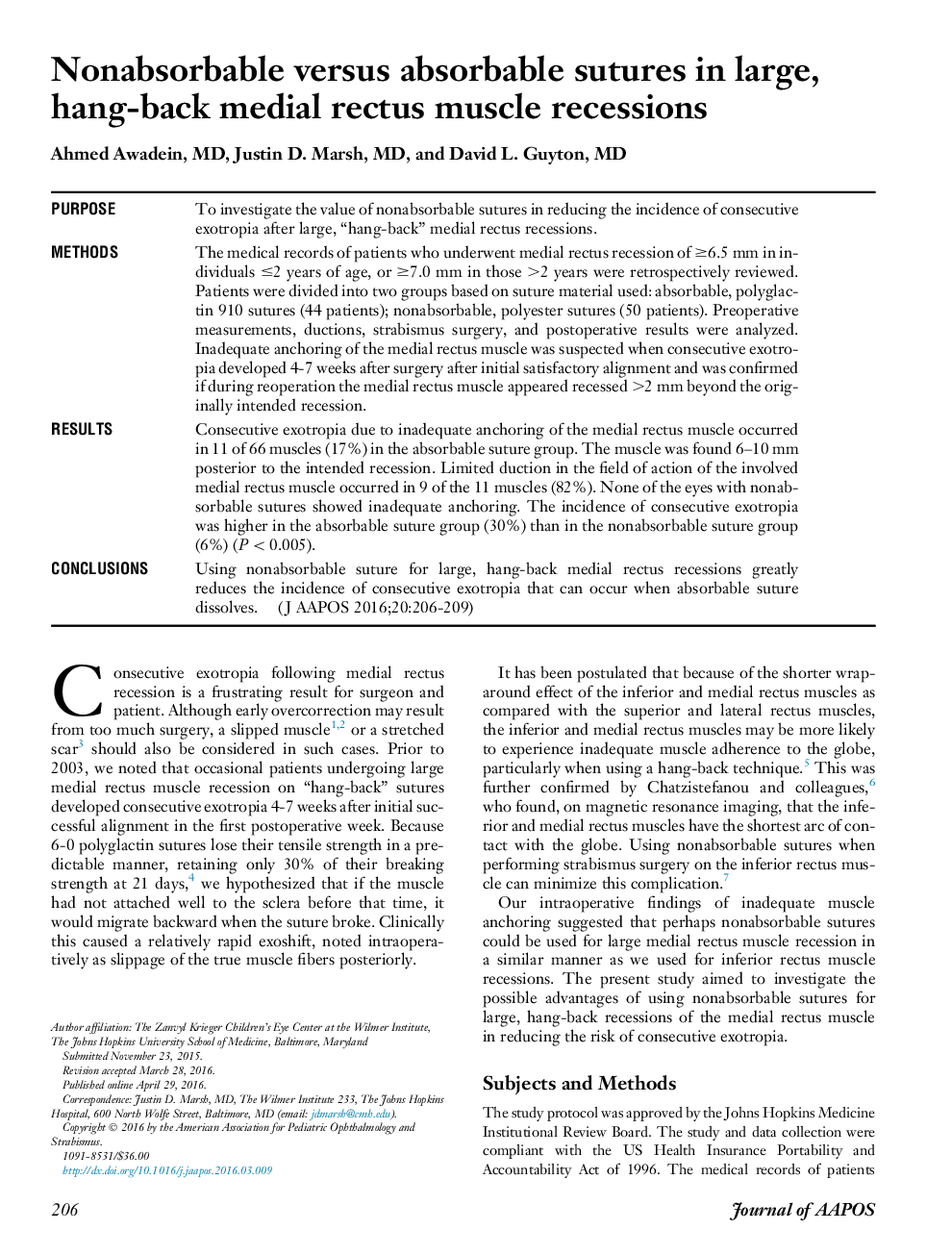| Article ID | Journal | Published Year | Pages | File Type |
|---|---|---|---|---|
| 4013324 | Journal of American Association for Pediatric Ophthalmology and Strabismus | 2016 | 4 Pages |
PurposeTo investigate the value of nonabsorbable sutures in reducing the incidence of consecutive exotropia after large, “hang-back” medial rectus recessions.MethodsThe medical records of patients who underwent medial rectus recession of ≥6.5 mm in individuals ≤2 years of age, or ≥7.0 mm in those >2 years were retrospectively reviewed. Patients were divided into two groups based on suture material used: absorbable, polyglactin 910 sutures (44 patients); nonabsorbable, polyester sutures (50 patients). Preoperative measurements, ductions, strabismus surgery, and postoperative results were analyzed. Inadequate anchoring of the medial rectus muscle was suspected when consecutive exotropia developed 4-7 weeks after surgery after initial satisfactory alignment and was confirmed if during reoperation the medial rectus muscle appeared recessed >2 mm beyond the originally intended recession.ResultsConsecutive exotropia due to inadequate anchoring of the medial rectus muscle occurred in 11 of 66 muscles (17%) in the absorbable suture group. The muscle was found 6–10 mm posterior to the intended recession. Limited duction in the field of action of the involved medial rectus muscle occurred in 9 of the 11 muscles (82%). None of the eyes with nonabsorbable sutures showed inadequate anchoring. The incidence of consecutive exotropia was higher in the absorbable suture group (30%) than in the nonabsorbable suture group (6%) (P < 0.005).ConclusionsUsing nonabsorbable suture for large, hang-back medial rectus recessions greatly reduces the incidence of consecutive exotropia that can occur when absorbable suture dissolves.
